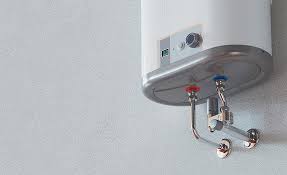Tankless units don’t need as much maintenance or spare parts as a conventional tank water heater. That doesn’t imply, however, that you ought to adopt a “set it and forget it” strategy. If you have a tankless hot water heater, it is crucial that you maintain it properly.
Regular maintenance can extend the life of your tankless water heater past the 20-year mark. You can learn how to maintain your tankless water heater by reading this article.
How Often Should You Clean Your Water Heater?
You probably have concerns about how frequently you should clean your tankless water heater, whether you’re a new user or have had one for a while.
The majority of manufacturers advise flushing your water heater once per year. However, the frequency may vary depending on your location and the quality of your water.
If you live in an area with hard water, you may need to flush your water heater more often. Consult your city government if you’re unsure about the quality of the water in your area. Reports on the state of municipal water are given to residents in every city on a monthly or quarterly basis.
You can choose how frequently to flush out your water heater with the assistance of your trusted plumber. The next topic we’ll cover is cleaning the exterior of the appliance.
How Does Tankless Water Heaters Maintenance Help?
To take care of maintenance, you can either make an appointment for service or do it yourself. For the majority of these units, cleaning the system in various ways is the main type of maintenance that is required.
Descaling efforts are required if minerals have built up on the unit’s parts. Installing an inline filter is a wise investment because it will significantly reduce buildup.
A thorough cleaning is helpful in the absence of that. These actions assist in maximizing system performance and lowering associated energy costs. These actions could also decrease unneeded wear and tear and possibly lengthen the lifespan of your unit.
Tankless Water Heater Maintenance

Flushing The System
At the very least once a year, the hot water heater needs to be flushed. Minerals build up inside the water heater throughout the year. This may accumulate more quickly if your water source is hard. Your unit’s heat exchanger may become harmed by mineral buildup.
Your monthly energy costs could increase if the tank’s efficiency declines. You can drastically reduce the lifespan of your tankless hot water heater by not flushing it. Unfortunately, your warranty does not cover damage brought on by mineral buildup.
Flushing will get rid of all this mineral buildup. You will need a sump pump, two lengths of hose, and a vinegar-water mixture to flush the tank. Your hot water heater needs to have all of its power turned off. In order to attach the hoses, turn off the water to the pump.
In order to get the vinegar water into the heater, you’ll then need to use the sump pump. You should flush the machine with plain water after using vinegar water to clean it out.
You can purchase a descaling kit that comes with instructions, or you can look in your hot water heater’s user manual for more information on how to do this.
You should hire a qualified plumber to perform Tankless Water Heater Maintenance if the job seems too difficult or you are concerned that you might make a mistake. They will be able to flush the system and check the water heater to make sure it is in working order.
Cleaning The Air Filter
Some tankless water heaters powered by natural gas also include a filter in-between the air intake pipe and the fan. The airflow may be hampered if this filter becomes clogged over time with dirt, insects, and other debris.
Even an electrical problem or error message could occur. Fortunately, cleaning the air filter is typically simple and quick. Consult your user manual, but in many cases, it may only require a few screws to be undone, the filter to be removed, washed with water, dried, and then reinserted into the device.
Descale A Tankless Water Heater
Since descaling a water heater is one of the maintenance tasks many homeowners can tackle with minimal assistance, we’re sharing the basic steps.
Start by cutting off the power to your water heater. Find the gas isolation valve, then close it. While performing maintenance on the unit, shut off the hot and cold water valves to stop water from entering.
Open the pressure relief valve if it is present on your appliance and gently let out any trapped pressure.
Next, attach the hoses from your flush kit to the hot and cold water service ports on your plumbing system. After that, put the submersible pump in your bucket. Put the hot water hose’s one end in the bucket and connect it to the pump.
Now you can either fill the bucket with four gallons of vinegar or the descaler that came with the flush kit.
Open the cold and hot service ports, then turn on the submersible pump to flush the water heater. For at least an hour, allow the water heater to be circulated with your chosen descaling solution. Anything shorter than an hour won’t effectively break down the scale buildup.
Deactivate the pump once the descaling is complete. Afterward, discard the vinegar.
Cleaning The Tank
To make sure that no dust or debris accumulates on the tank’s exterior, it is a good idea to wipe it down. Before beginning, turn off the water and electricity supplies. Clean the tank and the area around it. The water heater may experience problems if there is an accumulation of dust and debris.
The proper operation of your device will be helped by routine tankless water heater maintenance. When performing maintenance, examine all the heater’s other components. Verify that the pipes, valves, and heating elements are in excellent condition and operating as they should.
Check for any rust, leaks, or other suspicious-looking items. Please report any issues right away. An issue can worsen and become more expensive the longer you leave it unattended.





